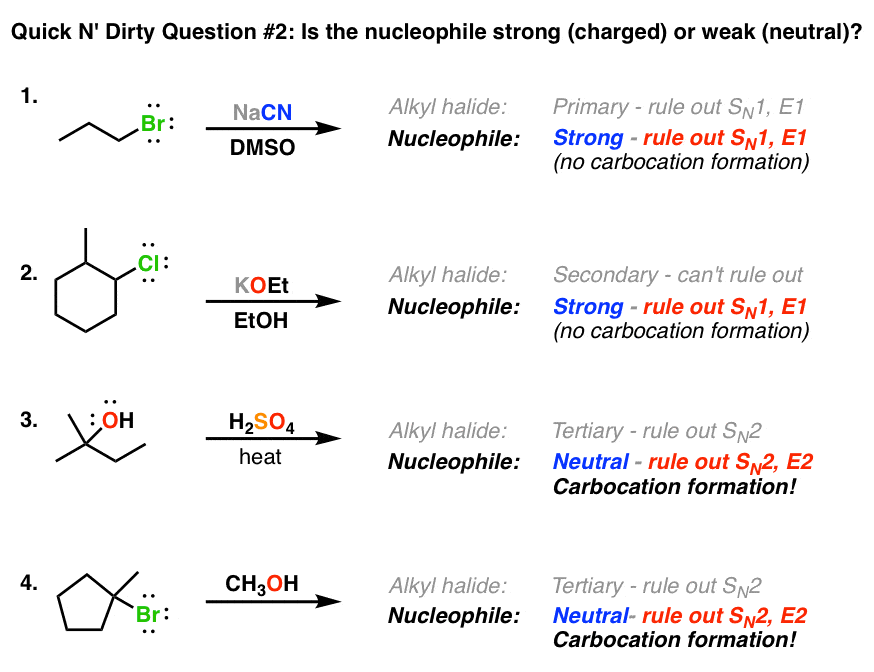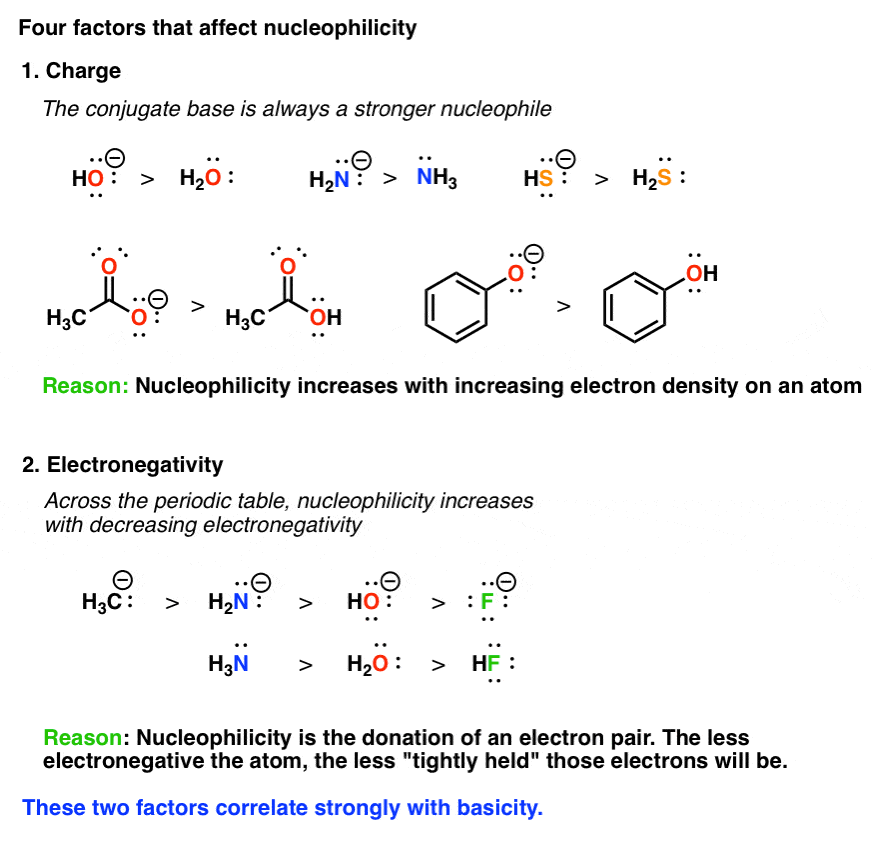For an Sn2 Reaction Which Makes the Best Nucleophile
Sn2 reaction is ___ molecular. One may also ask why is ch3oh a poor Nucleophile.

Solved Score 16 90 Day 1 09 03 Prog Interact With The Chegg Com
Herein what is a strong nucleophile for sn2.

. Tap again to see term. -The more substituted double bond will yield the main. This is VERY important throughout organic chemistry but will be especially important when trying to determine the products of elimination and substitution E1 E2 SN1 SN2reactions.
It does not wait for the leaving group to just leave. Factors affecting S N 2 mechanism. Negatively charged nucleophile is more stable then neutral one.
A primary substrate will S N 2E2 reactions because of less stereo-hinderance. Nucleophiles donate pairs of electrons so better nucleophiles more readily donate this pair of electrons. For example the dissociation of NaCl in water will produce a nucleophile Cl.
Protic polar solvents will reduce the reactivity of this nucleophile. SN2 reaction depends upon the nucleophilicity which is the relative strength of nucleophiles. Since two reacting species are involved in the slow rate.
The more nucleophilic a molecule is. In an SN2 reaction the nucleophile is better and it essentially pushes the leaving group off. Unlike an SN1 reaction an SN2 reaction substitution nucleophilic 2nd order kinetics is characterized by the disassociation of the.
The rate-determining step of this reaction depends on the interaction between the two species namely the nucleophile and the organic compound. Therefore the breaking of carbon halogen C X bond and making of carbon nucleophile C OH bond occurs simultaneously. Both require good leaving groups and both mechanisms are concerted.
What are strong nucleophiles. PPh3 is a good enough nucleophile to do SN2 reactions of primary and secondary alkyl halides. Click to see full answer.
The S N 2 reaction is a type of reaction mechanism that is common in organic chemistryIn this mechanism one bond is broken and one bond is formed synchronously ie in one step. SN2 reactions require a good nucleophile and E2 reactions require a strong base. In fact there is not a more important part of an organic chemistry reaction than the nucleophile and the electrophile.
Besides does E2 favor a strong base. It is assumed that the nucleophile attacks the carbon atom attached to the halogen atom from the side opposite to the halogen ie. Neutraluncharged nucleophile Small neutraluncharged nucleophile Small negatively charged nucleophile Bulky nucleopha Question 23 2 points A carbon with a positive charge often seen as a reactive intermediate in organic chemistry is known as carbanion carbocation free radical none of the above.
Since the two reactions share many of the same. The Effect of the Leaving Group in SN2 Reactions. S N 2 is a kind of nucleophilic substitution reaction mechanism the name referring to the Hughes-Ingold symbol of the mechanism.
In the above reaction of S N 2 example OH acts as a nucleophile attacks and simultaneously chlorine which is a good leaving group leaves OH comes and attaches at that point. For an SN2 reaction - which makes the best nucleophile. Polar aprotic solvents are best suited for S N 2 reactions as polar solvents create nucleophiles.
In a SN2 reaction ammonia is the nucleophile and it is asked which solvent will make the reaction faster. The reaction occurs in one single step only. A reaction where an electron-pair donation by a nucleophile to an atom usually carbon displaces a leaving group from the same atom in a concerted manner.
The key principle here is that the better the leaving group the faster the SN2 reaction. An S N 2 reaction with a 3 electrophile does not proceed to an appreciable degree. The mechanism of SN 2 reaction involves a single step.
OH- H 2 O and RO- ROH. A nucleophile donates an e pair to the substrate carbon usually an organic halide or tosylate and displacing a leaving group. Nucleophilicity Because the nucleophile is involved in the rate-determining step of SN2 reactions stronger nucleophiles react faster.
The reaction is ______. - Small negatively charged nucleophile -Bulky nucleophile -Small neutraluncharted nucleophile -Neutraluncharged nucleophile The observations in elimination reactions can generally predict the products by using Zaitsevs rule which is. Click again to see term.
However a good nucleophile is often a strong base. So the principle reaction path is one where the substrate and the nucleophile 2 molecules second order get together and then the leaving group finally leaves. SN2 and E2 reactions share a number of similarities.
For an SN2 reaction - which makes the best nucleophile. But why does S N 2 favor strong nucleophile and S N 1 favor weak nucleophile from the first place. Which species are present in the transition state of the rate-limiting step.
The nucleophile is species that helps to speed up the SN2 reaction. Four factors that determine what makes a good nucleophile are its charge electronegativity the solvent and the steric bulk. The nucleophilicity may also depend upon the structural features.
I also know that in general a tertiary substrate will favor S N 1E1 reactions because a tertiary carbocation is more stable. The S N 2 reaction mechanism involves the nucleophilic substitution reaction of the leaving group which generally consists of halide groups or other electron-withdrawing groups with a nucleophile in a given organic compound. And this is true for any substitution and elimination reaction because the easier it is for the nucleophile to kick out the leaving group the faster this replacement will occur.
Comparisons using these factors are best done if one keeps all variables constant.

Deciding Sn1 Sn2 E1 E2 2 The Nucleophile Base

What Makes A Good Nucleophile Master Organic Chemistry

Solved Circle The Best Nucleophile For An Sn2 Reaction 1 Chegg Com

Comments
Post a Comment